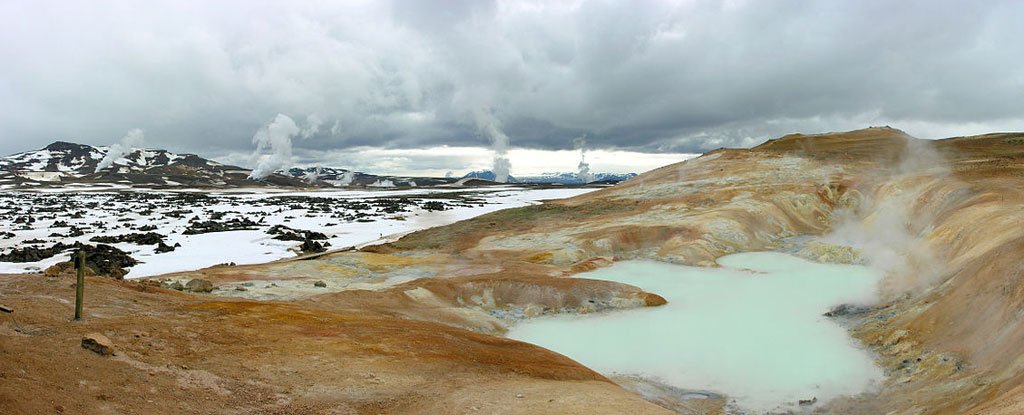
The Krafla volcano is one of the most awe-inspiring natural wonders in the world.
The world's first underground magma observatory is being planned by a team of international researchers in the country's northeast.
The $100-million project involves scientists and engineers from 38 research institutes and companies in 11 countries, including the US, Britain, and France.
The "Krafla Magma Testbed" team hopes to drill into the volcano's magma chamber. The molten rock beneath the surface is a mystery.
Paolo Papale, a volcanologist at the Italian national institute for geophysics and volcanology INGV, tells Agence France-Presse that the KMT is the first magma observatory in the world.
He says that they have never seen underground magma apart from encounters while drilling in Hawaii and Kenya.
Scientists hope the project will lead to improvements in basic science.
They want to know more about volcano prediction and risks.
Knowing the location of the magma is important in order to be prepared for an eruption. Papale says that we are almost blind without that.
The magma observatory is a result of an unexpected discovery.
In 2009, when engineers were expanding Krafla's geothermal power plant, a bore drill hit a pocket of 900-degree-Celsius (1,650 Fahrenheit) magma at a depth of 2.1 kilometers.
The lava flowed nine meters up the well, damaging the drilling material.
There was no eruption and no one was hurt.
The volcanologists realized they were close to a pocket of 500 million cubic meters.
The scientists were surprised to find this shallow magma, they had expected to be able to drill to a depth of 4.5 kilometers.
Studies show that the magma had the same properties as from a 1724 eruption, meaning it was at least 300 years old.
"This discovery has the potential to be a huge breakthrough in our ability to understand many different things," Papale says.
It is technically challenging.
The national electricity agency that runs the site, Landsvirkjun, had a chance find.
The rock is so hot that the fluids are "supercritical", a state in-between liquid and gas.
The energy produced there is five to 10 times more powerful than in a conventional drill.
The highest volcano steam temperature ever recorded was 450C during the incident.
The plant's 60-megawatt capacity is currently served by 18 boreholes.
The head of geothermal operations and resource management, Vordis Eiriksdottir, hopes the KMT project will lead to new technology to be able to drill deeper and to be able to harness the energy that we have not been able to do before.
It is technically challenging to drill in such an extreme environment. The materials have to be able to resist the hot steam.
One would naturally worry about the possibility of a volcanic eruption if the operation were to happen.
He says it's poking an elephant with a needle.
There were a dozen holes that hit magma in three different places.
Agence France-Presse.
